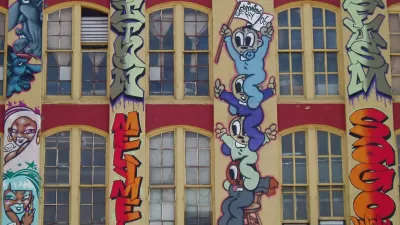In a place as dynamic as New York City, balancing preservation with development pressure is no easy task.
"The battle lines were familiar. Churning out petitions and clamoring at hearings, hundreds of city residents had mobilized to protest a plan by St. Vincent's Hospital to replace nine buildings in the Greenwich Village Historic District with a 20-story medical center and condominiums.
On the other side were the Rudin Management Company, one of the city's largest developers, and St. Vincent's, which argued that a new building and income from the condo deal were vital to saving the hospital and meeting Manhattan's health needs.
In the middle, as usual, was the Landmarks Preservation Commission, which was struggling this year to make a judgment call under the klieg lights as city politicians took positions for and against.
Over a decade of whirlwind development, the Landmarks Preservation Commission has repeatedly played dance partner to a potent mix of preservationists, developers and city politicians. It must strike a balance between protecting architecture and accepting economic realities, between a responsibility to history and a knowledge that the city must evolve."
FULL STORY: Preservation and Development, Engaged in a Delicate Dance

Manufactured Crisis: Losing the Nation’s Largest Source of Unsubsidized Affordable Housing
Manufactured housing communities have long been an affordable housing option for millions of people living in the U.S., but that affordability is disappearing rapidly. How did we get here?

Americans May Be Stuck — But Why?
Americans are moving a lot less than they once did, and that is a problem. While Yoni Applebaum, in his highly-publicized article Stuck, gets the reasons badly wrong, it's still important to ask: why are we moving so much less than before?

Using Old Oil and Gas Wells for Green Energy Storage
Penn State researchers have found that repurposing abandoned oil and gas wells for geothermal-assisted compressed-air energy storage can boost efficiency, reduce environmental risks, and support clean energy and job transitions.

Greening Oakland’s School Grounds
With help from community partners like the Trust for Public Land, Oakland Unified School District is turning barren, asphalt-covered schoolyards into vibrant, green spaces that support outdoor learning, play, and student well-being.

California Governor Suspends CEQA Reviews for Utilities in Fire Areas
Utility restoration efforts in areas affected by the January wildfires in Los Angeles will be exempt from environmental regulations to speed up the rebuilding of essential infrastructure.

Native American Communities Prepare to Lead on Environmental Stewardship
In the face of federal threats to public lands and conservation efforts, indigenous groups continue to model nature-centered conservation efforts.
Urban Design for Planners 1: Software Tools
This six-course series explores essential urban design concepts using open source software and equips planners with the tools they need to participate fully in the urban design process.
Planning for Universal Design
Learn the tools for implementing Universal Design in planning regulations.
Heyer Gruel & Associates PA
City of Moreno Valley
Institute for Housing and Urban Development Studies (IHS)
City of Grandview
Harvard GSD Executive Education
Salt Lake City
NYU Wagner Graduate School of Public Service
City of Cambridge, Maryland





























